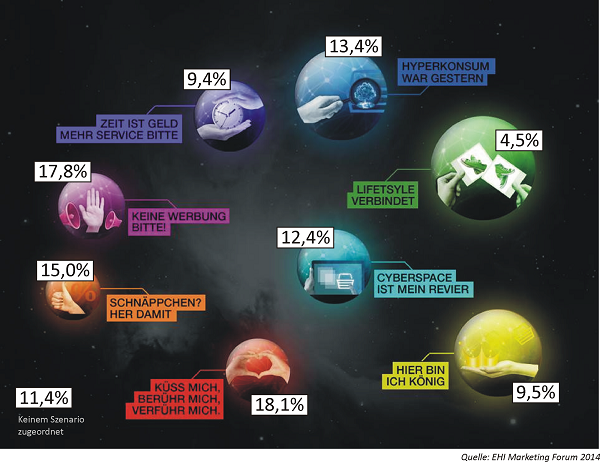Future scenarios for retail communication 2025
Together with marketing managers for retail, media representatives and service providers the EHI Retail Institute has investigated the communication and shopping behaviors of future customers. The systematically identified scenarios created provide an insight into possible forms of communication between consumers and retailers until the year 2025.
Successful and strong retailers primarily have one thing in mind, their customers. Those who are close to their customers see how their spheres of life change and can develop strategies or adapt their business models to adapt. How will customers and their lives change in the future? Which values might your customers have in the future? How might their everyday shopping and communication activities look?
The EHI has developed future scenarios together with leading marketing professionals from the retail industry, media and service providers which give a view of the customers of tomorrow and which draw conclusions concerning the retail communication up to the year 2025. This has resulted in eight scenarios:
The future scenarios provide retailers with the opportunity to recognize communication and consumption needs at an early stage and to develop appropriate strategies. The German study can be ordered here.
Furthermore the presentation of the scenarios gave rise to questions about their relevance in the present. The EHI and the GfK considered this question together. A reconciliation of the scenarios with the "Total Shopper Dates" of the GfK offers interesting results, which not only present insights into factual consumption expenditure but also into behavior and preferences of the alternative living environment.
You can order the results here.




